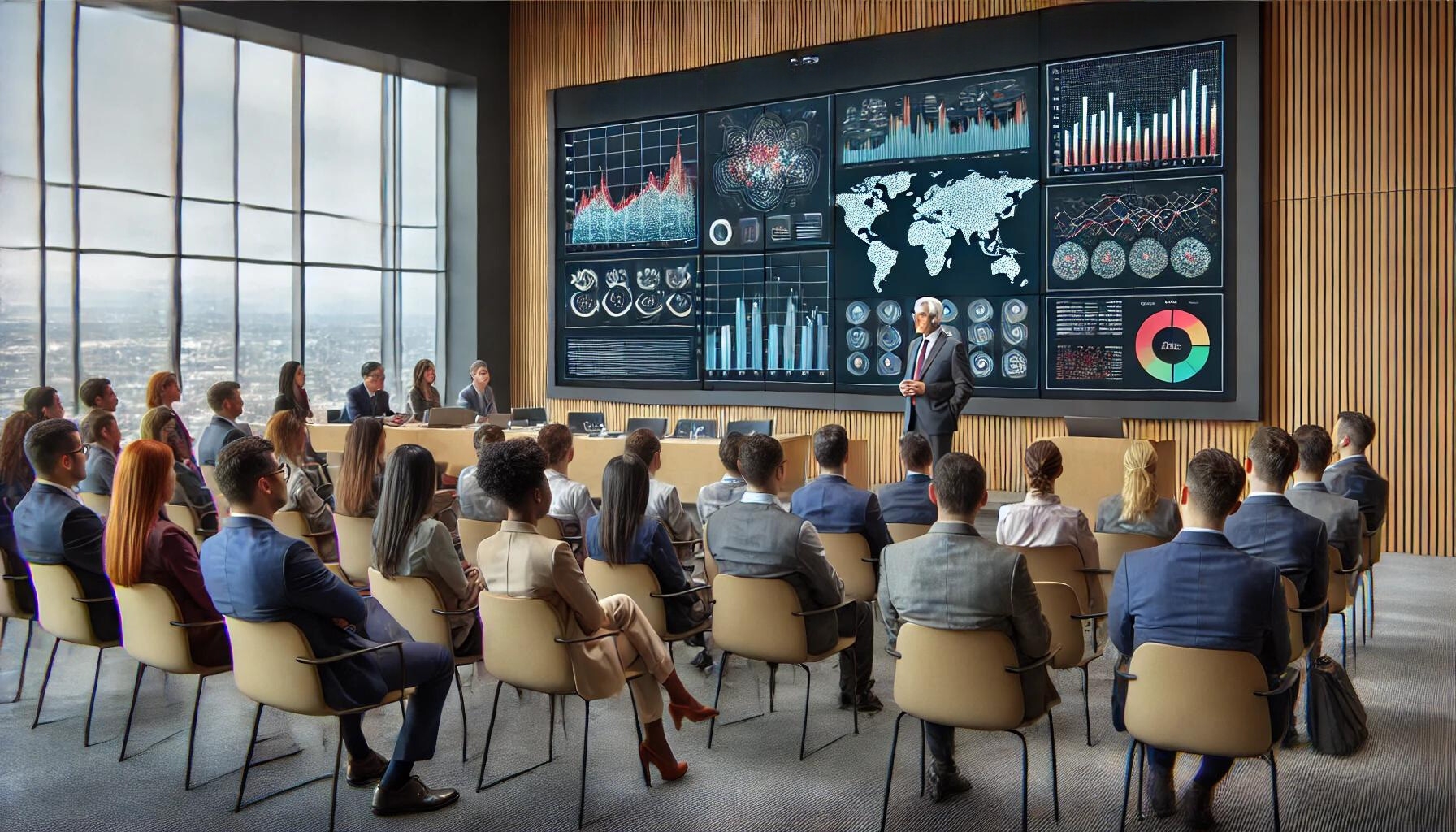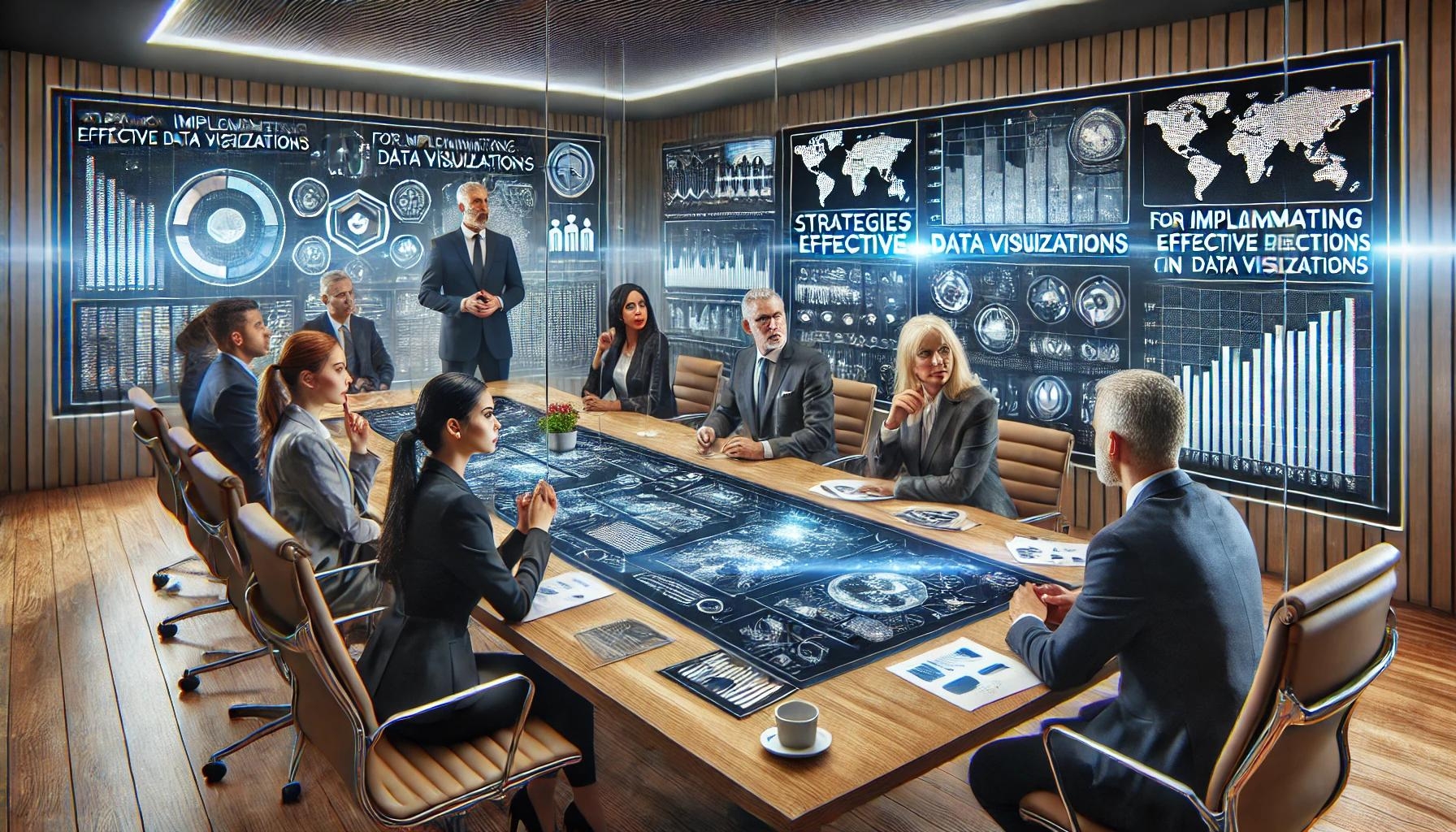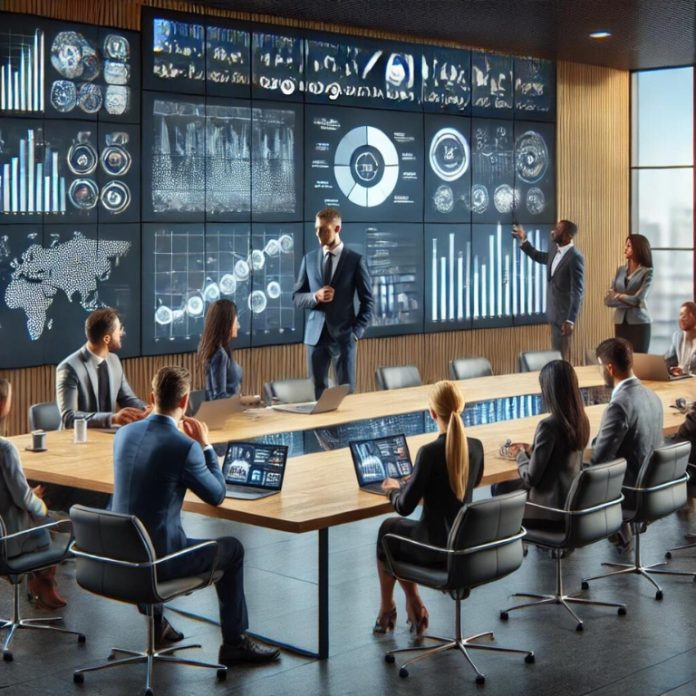In the dynamic field of Human Resources (HR), data visualization has emerged as a pivotal tool for effectively communicating insights and driving strategic decisions. By transforming complex data sets into clear, intuitive visual representations, HR professionals can enhance understanding and engagement among stakeholders, streamline decision-making processes, and foster a data-driven culture within organizations.
Key Takeaways
- Data visualization in HR enhances decision-making by providing clear, actionable insights through visual representations like charts, graphs, and maps.
- Effective HR data visualizations require an understanding of the audience and the strategic use of tools that cater to their information needs and preferences.
- Through case studies, it’s evident that successful data visualization in HR leads to improved recruitment processes, enhanced employee engagement, and optimized performance management.
The Importance of Data Visualization in HR

Enhancing Decision-Making
Data visualization in HR plays a pivotal role by enabling quicker and more effective decision-making processes. Visual representations help stakeholders grasp complex data swiftly, which is essential in high-stakes environments.
Improving Stakeholder Engagement
Effective data visualization significantly improves engagement with both internal and external stakeholders. By presenting data in an easily digestible format, it ensures that everyone, regardless of their technical expertise, can understand and engage with the information.
Facilitating Data-Driven Culture
Adopting data visualization in HR practices encourages a data-driven culture within organizations. It empowers all team members to interact with data actively, fostering an environment where data-driven decisions are the norm.
Key Types of HR Data Visualizations

< h3>KPIs, Charts, and Graphs
KPIs, charts, and graphs provide immediate insights into various HR metrics such as workforce composition, recruitment success, and performance levels, making complex data more accessible and understandable.
Maps for Geographic Insights
Maps, including geo maps and heat maps, offer a visual representation of employee distribution and trends across different locations, enhancing the geographical understanding of HR data.
Forecasting Future Trends
Forecasting tools are essential for predicting future HR needs, identifying potential risks, and planning strategically to address workforce gaps and demands.
Strategies for Implementing Effective Data Visualizations in HR

Understanding Your Audience
To implement effective data visualizations in HR, it is crucial to understand the audience’s needs and preferences. Tailoring visualizations to the specific audience ensures that the data is not only accessible but also actionable, leading to better-informed decision-making processes.
Choosing the Right Visualization Tools
Selecting the appropriate tools is essential for creating impactful data visualizations. The right tools can enhance the clarity and effectiveness of the visual representation, making complex data more comprehensible and engaging.
Storytelling Through Data
Effective data visualizations do more than just present data; they tell a story. By weaving data into a narrative, HR professionals can highlight trends, explain changes, and forecast future scenarios, making it easier for stakeholders to grasp the significance of the data and its implications for the organization.
Case Studies: Success Stories in HR Data Visualization

Improving Recruitment Processes
In the competitive landscape of talent acquisition, data visualization has proven to be a game-changer. By leveraging visual tools, HR departments have been able to streamline the recruitment process, making it more efficient and effective. This approach not only speeds up the hiring process but also helps in identifying the right candidates who fit the organizational culture and job requirements.
Enhancing Employee Engagement
Data visualization plays a crucial role in enhancing employee engagement by providing clear and actionable insights. Through interactive dashboards and real-time data, HR professionals can monitor engagement levels and quickly address areas that need improvement. This proactive approach ensures that employee satisfaction and productivity remain high.
Optimizing Performance Management
Effective performance management is critical for organizational success. Data visualization aids in this area by offering a clear view of performance metrics and trends. This allows managers to make informed decisions and provide timely feedback to their teams. The ability to visualize data helps in setting realistic performance goals and aligning them with the company’s strategic objectives.
Conclusion
In the realm of Human Resources, the power of data visualization cannot be overstated. It transforms complex data sets into clear, impactful visuals that enhance understanding and decision-making across all levels of an organization. By effectively communicating insights through visual means, HR professionals can foster greater engagement, align stakeholders, and drive strategic initiatives with precision. As we’ve explored throughout this article, whether it’s through charts, graphs, or interactive maps, each method of data visualization offers unique benefits that can significantly elevate the HR function. Embracing these tools not only aids in the interpretation of vast amounts of data but also empowers HR teams to contribute more effectively to business success.
Frequently Asked Questions
Why is data visualization important in HR?
Data visualization in HR is crucial because it allows teams to interact and engage with data more effectively, making complex information easily consumable and accessible. This enhances decision-making, improves stakeholder engagement, and fosters a data-driven culture within the organization.
What are some common types of HR data visualizations?
Common types of HR data visualizations include KPIs, charts, and graphs for instant insights, maps like geo maps and heat maps for geographic insights, and forecasting tools to identify workforce trends and gaps.
How can HR effectively implement data visualization?
HR can effectively implement data visualization by understanding the audience, choosing the right visualization tools, and using data to tell a compelling story. This approach helps in conveying insights clearly and engaging stakeholders more effectively.











